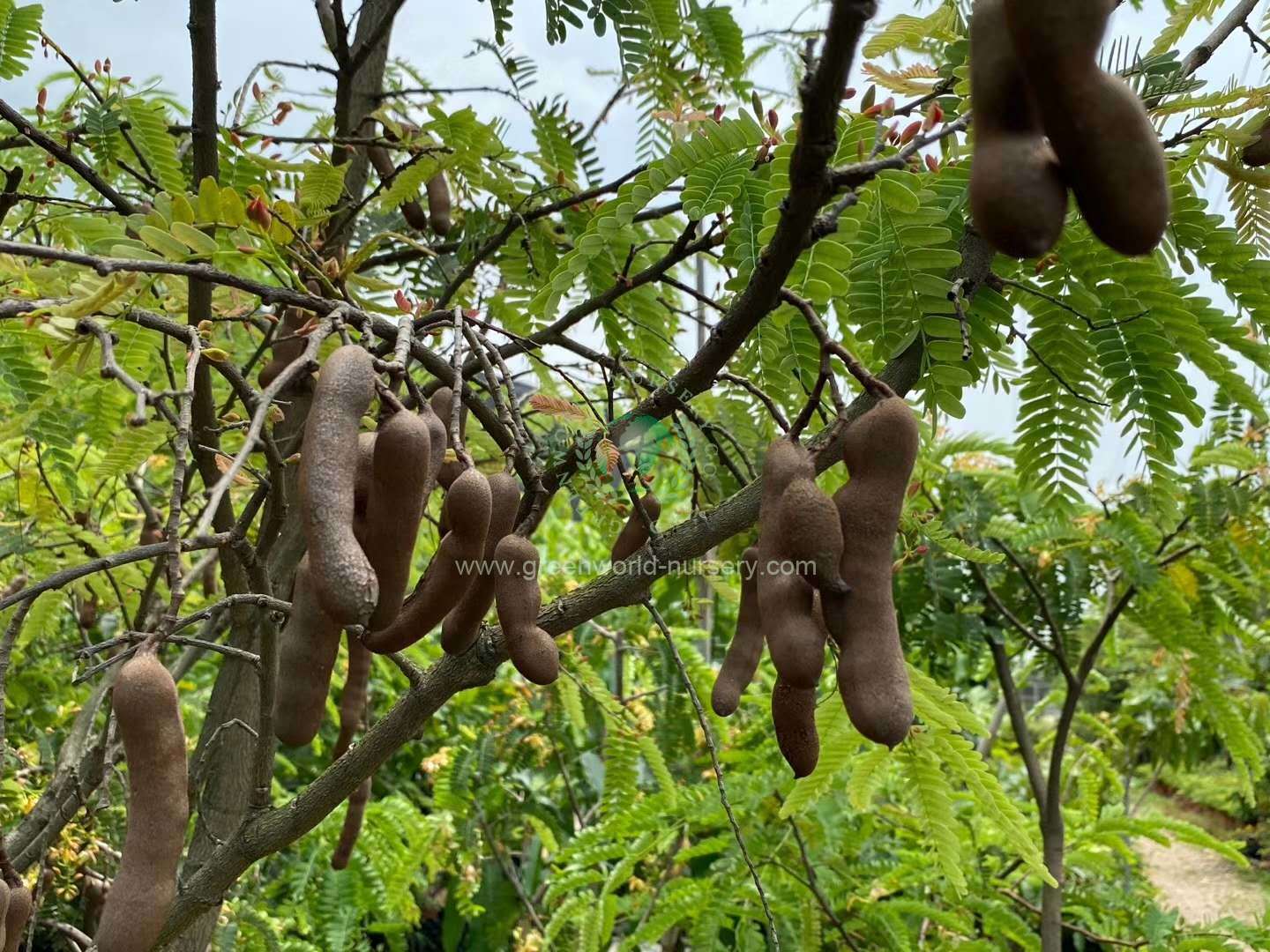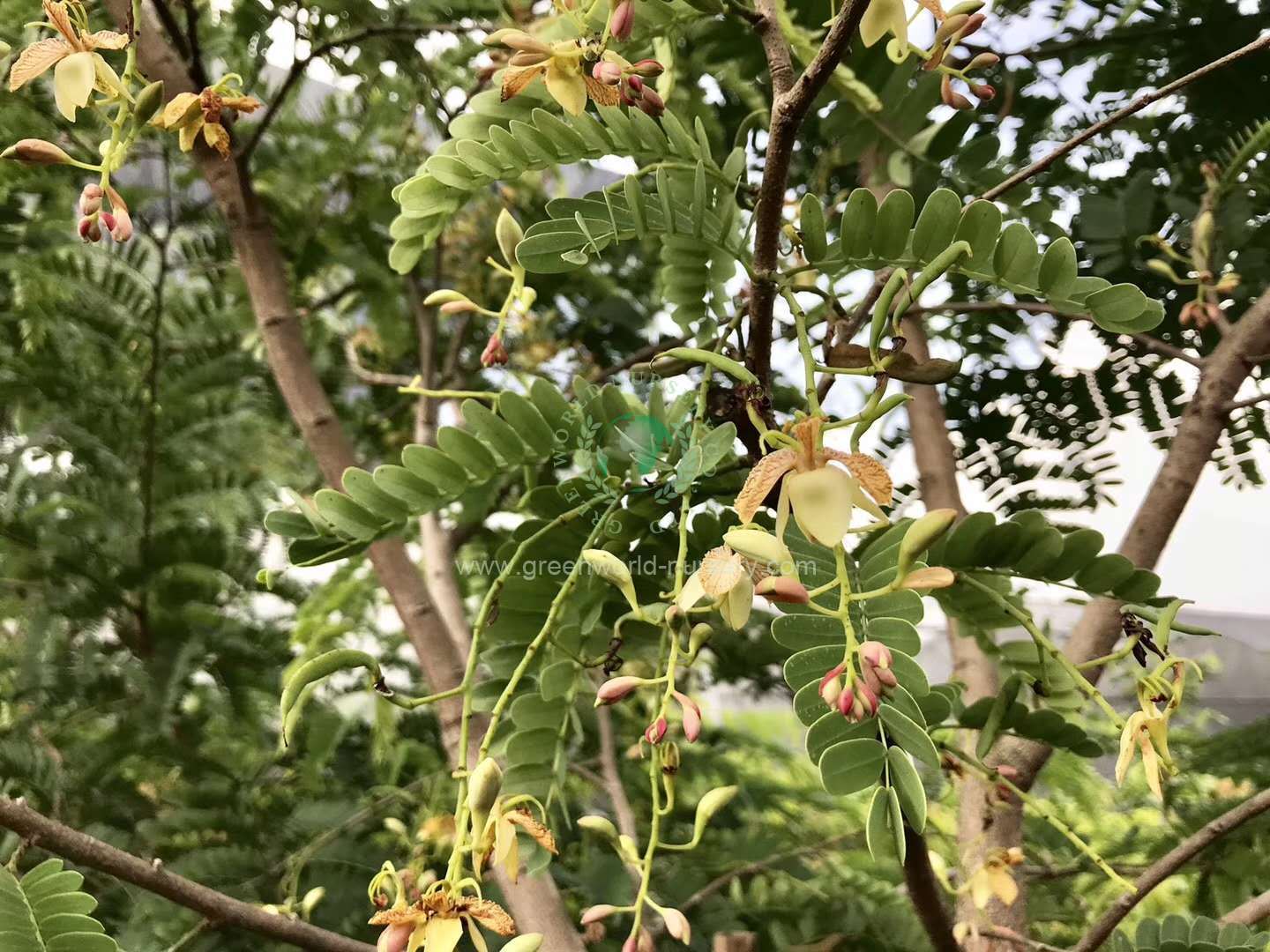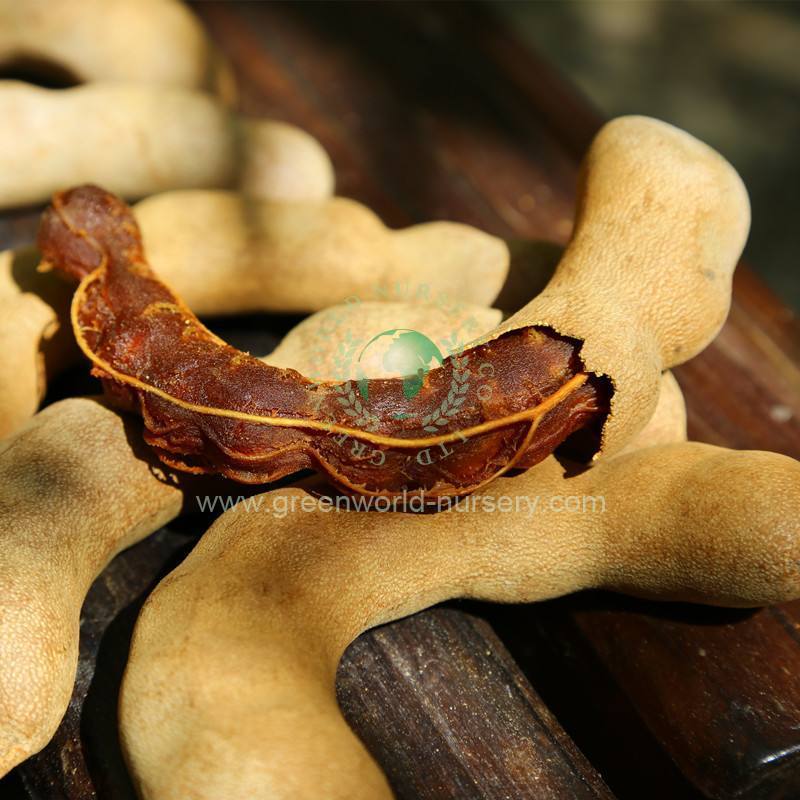




Tamarindus Indica
Categories:
Fruit Trees
Tamarind (Tamarindus indica) is a leguminous tree (family Fabaceae) bearing edible fruit that is indigenous to tropical Africa. The genus Tamarindus is monotypic, meaning that it contains only this species.
E-mail: export@greenworld-nursery.com
Whatsapp: 008613427573540
Keyword:
Tamarindus Indica
Detail
Tamarind (Tamarindus indica) is a leguminous tree (family Fabaceae) bearing edible fruit that is indigenous to tropical Africa. The genus Tamarindus is monotypic, meaning that it contains only this species.
The tamarind tree produces brown, pod-like fruits that contain a sweet, tangy pulp, which is used in cuisines around the world. The pulp is also used in traditional medicine and as a metal polish. The tree's wood can be used for woodworking and tamarind seed oil can be extracted from the seeds. Tamarind's tender young leaves are used in Indian cuisine.[6] Because tamarind has multiple uses, it is cultivated around the world in tropical and subtropical zones.
Tamarindus indica is probably indigenous to tropical Africa,[10] but has been cultivated for so long on the Indian subcontinent that it is sometimes reported to be indigenous there.[8] It grows wild in Africa in locales as diverse as Sudan, Cameroon, Nigeria, Zambia and Tanzania. In Arabia, it is found growing wild in Oman, especially Dhofar, where it grows on the sea-facing slopes of mountains. It reached South Asia likely through human transportation and cultivation several thousand years BC.[8][11] It is widely distributed throughout the tropical belt, from Africa to South Asia, northern Australia, and throughout Oceania, Southeast Asia, Taiwan and China.
In the 16th century, it was introduced to Mexico and Central America, and to a lesser degree to South America, by Spanish and Portuguese colonists, to the degree that it became a staple ingredient in the region's cuisine.[12]
Today, India is the largest producer of tamarind.[13] The consumption of tamarind is widespread due to its central role in the cuisines of the Indian subcontinent, Southeast Asia, and the Americas, especially Mexico.
The tamarind is a long-lived, medium-growth tree, which attains a maximum crown height of 12 to 18 metres (40 to 60 feet). The crown has an irregular, vase-shaped outline of dense foliage. The tree grows well in full sun. It prefers clay, loam, sandy, and acidic soil types, with a high resistance to drought and aerosol salt (wind-borne salt as found in coastal areas).[14]
The evergreen leaves are alternately arranged and pinnately lobed. The leaflets are bright green, elliptic-ovular, pinnately veined, and less than 5 cm (2 in) in length. The branches droop from a single, central trunk as the tree matures, and are often pruned in agriculture to optimize tree density and ease of fruit harvest. At night, the leaflets close up.[14]
As a tropical species, it is frost-sensitive. The pinnate leaves with opposite leaflets give a billowing effect in the wind. Tamarind timber consists of hard, dark red heartwood and softer, yellowish sapwood.[15]
The tamarind flowers (although inconspicuously), with red and yellow elongated flowers. Flowers are 2.5 cm wide (one inch), five-petalled, borne in small racemes, and yellow with orange or red streaks. Buds are pink as the four sepals are pink and are lost when the flower blooms
he fruit is an indehiscent legume, sometimes called a pod, 12 to 15 cm (4 1⁄2 to 6 in) in length, with a hard, brown shell.[17][18][19]
The fruit has a fleshy, juicy, acidic pulp. It is mature when the flesh is coloured brown or reddish brown. The tamarinds of Asia have longer pods (containing six to 12 seeds), whereas African and West Indian varieties have shorter pods (containing one to six seeds). The seeds are somewhat flattened, and a glossy brown. The fruit is best described as sweet and sour in taste, and is high in tartaric acid, sugar, B vitamins, and, unusually for a fruit, calcium.[14]
The fruit is harvested by pulling the pod from its stalk. A mature tree may be capable of producing up to 175 kg (386 lb) of fruit per year. Veneer grafting, shield (T or inverted T) budding, and air layering may be used to propagate desirable cultivars. Such trees will usually fruit within three to four years if provided optimum growing conditions.
The fruit pulp is edible. The hard green pulp of a young fruit is considered by many to be too sour, but is often used as a component of savory dishes, as a pickling agent or as a means of making certain poisonous yams in Ghana safe for human consumption.[20] As the fruit matures it becomes sweeter and less sour (acidic) and the ripened fruit is considered more palatable. The sourness varies between cultivars and some sweet tamarind ones have almost no acidity when ripe. In Western cuisine, tamarind pulp is found in Worcestershire Sauce[21] and HP Sauce.
Tamarind paste has many culinary uses including a flavoring for chutnies, curries, and the traditional sharbat syrup drink.[22] Tamarind sweet chutney is popular in India and Pakistan[23] as a dressing for many snacks. Tamarind pulp is a key ingredient in flavoring curries and rice in south Indian cuisine, in the Chigali lollipop, and in certain varieties of Masala Chai tea. Across the Middle East, from the Levant to Iran, tamarind is used in savory dishes, notably meat-based stews, and often combined with dried fruits to achieve a sweet-sour tang.[24][25] In the Philippines, the whole fruit is used as an ingredient in the traditional dish called sinigang to add a unique sour taste, unlike that of dishes that use vinegar instead. Indonesia also has a similarly sour, tamarind-based soup dish called sayur asem.
In Mexico and the Caribbean, the pulp is diluted with water and sugared to make an agua fresca drink
Previous Page
Next Page
Company Advantages
Quality & Experience
☑ Straight Trunk
☑ Well rooted & Well Formed Canopy
☑ Potted with Cocopeat
☑ More than 15 years Experience for Growing and Exporting Plants
Supply Ability & Plantation
☑ More Than 300000 Potted Plants Per Year
☑ More Than 100 Varieties of Plants Species
☑ More Than 205 Hectares Plantation, Still expanding.
Reasonable Price At All Times
☑ Rational and Competitive Price
☑ Maximum Value Added To Clients
Integrity & Responsibility
☑ Mutual Benefit & Win Win Solution
☑ Responsible For Any Lost Caused By Us

Products Atlas
Frequently Asked Questions
WHAT IS YOUR QUALITY STANDARD AND AVAILABLE STOCK EACH YEAR?
WHAT IS THE PROCEDURE FOR EXPORTING THE PLANTS?
WHO WILL ARRANGE THE CONTAINER? AND HOW MUCH IS THE TRANSPORT?
WHAT IS YOUR PRICE TERM AND PAYMENT TERM?
WHAT KIND OF DOCUMENTS YOU PROVIDE FOR EXPORTING PLANTS?
WHAT IS THE DELIVERY TIME AFTER PLACING THE ORDER?
ARE YOU A TRADER OR PRODUCER FOR PLANTS?
WILL THE PLANTS DIE IN THE CONTAINER WITHOUT LIGHT AND WATER DURING LONG TRANSPORT?
WHICH SEA PORT WE USE TO EXPORT THE PLANTS?
WHAT KIND OF CONTAINER AND TEMPERATURE FOR EXPORTING THE PLANTS?
PLANTS CATERGORIES
Add:Address:
Gongchun Village, Mingcheng town, Gaoming district, Foshan City, Guangdong province
Phone / Whatsapp / Wechat:
SAF Coolest v1.3.1.2 设置面板 GAGSD-ZGYF-JQXZE-XFW
V1.3.1 SVG图标库请自行添加图标,用div包起来,并命名使用
General Manager : Tom Tse
Phone / WhatsApp / Wechat:
0086-13427573540
Sale: Jenny
Phone / WhatsApp / Wechat:
E-mail:

